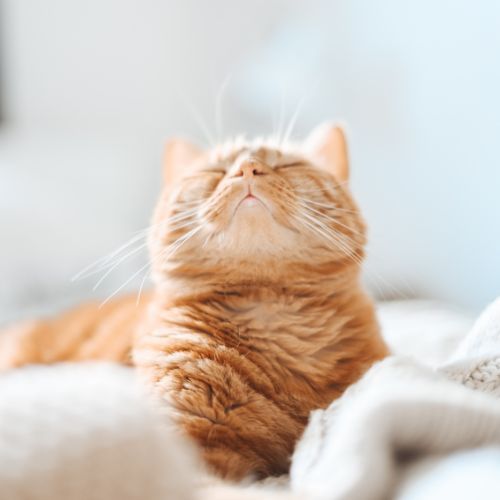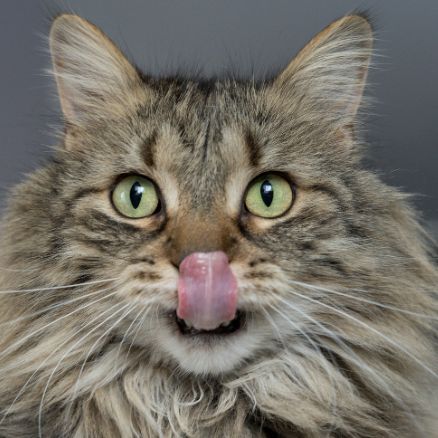Decoding Feline Diets: Chocolate & Cats - A Comprehensive Guide to the Dos and Don'ts of Feeding Your Feline Friend
As cat owners, we love to pamper and indulge our feline friends, often sharing our own favorite treats with them. However, it's crucial to understand that not all human foods are safe for cats, and some can pose severe health risks. One such food is chocolate. In this comprehensive article, we will answer the question, "Can cats eat chocolate?" and delve into the dos and don'ts of feeding your beloved pet.
The importance of proper nutrition for your cat cannot be overstated, as it directly impacts their overall health, well-being, and lifespan. A well-informed cat owner can prevent potential hazards and ensure their feline companion thrives. Through this article, you can expect to learn about the dangers of chocolate consumption in cats, the symptoms of chocolate poisoning, and what actions to take if your cat ingests chocolate. Furthermore, we will provide guidance on feeding your cat a balanced diet, offering appropriate treats, and avoiding common feeding mistakes.
By gaining a deeper understanding of your cat's dietary needs and the potential risks associated with certain human foods, you can become a more responsible and caring pet parent. So, join us as we explore the world of feline nutrition and help you make informed decisions about your cat's diet, ensuring their health and happiness for years to come.

The Hidden Dangers of Chocolate for Cats
While chocolate is a beloved treat for humans, it can be extremely dangerous for our feline companions. Chocolate contains two substances that are toxic to cats: theobromine and caffeine. Both of these compounds stimulate the nervous system and can lead to severe health problems or even death in cats.
Even a small amount of chocolate can cause symptoms such as vomiting, diarrhea, rapid breathing, increased heart rate, seizures, tremors, and weakness. In severe cases, chocolate poisoning can result in coma and death. The severity of the poisoning depends on the type and quantity of chocolate ingested, as well as the size and overall health of the cat. Dark chocolate and baking chocolate contain the highest levels of theobromine and caffeine, making them the most dangerous types for cats.
If you suspect your cat has consumed chocolate, immediate action is crucial. Contact your veterinarian or an emergency animal clinic as soon as possible. Early intervention can help prevent more severe complications and increase the chances of a full recovery. Your veterinarian may induce vomiting, administer activated charcoal, or provide other supportive care based on the severity of your cat's condition.
To prevent accidental chocolate ingestion, store chocolate and chocolate-containing products in secure locations, out of your cat's reach. Educate family members and guests about the dangers of chocolate for cats and the importance of keeping it away from your pets.
Top 10 Foods Cats Should Never Eat!
🛑Chocolate - Contains theobromine and caffeine, which can cause vomiting, diarrhea, rapid breathing, increased heart rate, seizures, and even death in cats.
🛑Onions/Garlic/Chives - These contain compounds that can damage red blood cells, leading to anemia, weakness, and lethargy.
🛑Grapes/Raisins - Can cause acute kidney failure in cats, leading to vomiting, diarrhea, dehydration, and other severe symptoms.
🛑Alcohol - Even small amounts can cause rapid intoxication, vomiting, disorientation, tremors, coma, and death in cats.
🛑Caffeine - Found in coffee, tea, and energy drinks, it can cause hyperactivity, rapid breathing, heart palpitations, tremors, and seizures in cats.
🛑Dairy products - Many cats are lactose intolerant, and consuming dairy can cause diarrhea, vomiting, and gastrointestinal upset.
🛑Raw eggs - Contain a protein called avidin that can interfere with the absorption of vitamin B7 (biotin), leading to skin and coat problems. Raw eggs also pose a risk of Salmonella infection.
🛑Raw fish - Contains an enzyme that destroys thiamine, an essential B vitamin, which can lead to neurological issues and seizures if consumed regularly.
🛑Xylitol - A sugar substitute found in many sugar-free products, it can cause rapid insulin release, leading to hypoglycemia, seizures, and liver failure in cats.
🛑Dog food - While not toxic, dog food lacks essential nutrients required by cats, such as taurine, and should not be fed as a regular diet.
A Balanced Diet: The Key to Feline Health
Providing your cat with a balanced diet is essential for maintaining their overall health and well-being. Cats are obligate carnivores, meaning they require animal-based protein sources to meet their nutritional needs. High-quality, age-appropriate cat food will ensure your cat receives the necessary nutrients in the correct proportions.
When selecting cat food, look for products that have undergone feeding trials and meet the standards set by the Association of American Feed Control Officials (AAFCO). Consult your veterinarian for personalized recommendations based on your cat's age, size, activity level, and any specific health concerns.
In addition to feeding a balanced diet, it's crucial to establish a consistent feeding schedule and monitor your cat's weight. Regularly weigh your cat and adjust their food intake according to their individual needs. Obesity can lead to numerous health problems in cats, including diabetes, heart disease, and joint issues.
Treats & Human Foods: Proceed with Caution
While it's tempting to share our favorite treats and snacks with our pets, it's essential to remember that many human foods are not appropriate for cats. As previously discussed, chocolate is toxic to cats and should never be offered. Other potentially harmful foods include onions, garlic, grapes, raisins, and avocado.
Instead of offering human food, opt for treats specifically designed for cats. These treats are formulated with your cat's nutritional needs in mind and can be a fun way to bond with your pet or reward good behavior. However, moderation is key when it comes to treats, as overfeeding can contribute to obesity and other health issues.
If you're considering making dietary changes or introducing new foods to your cat's diet, it's always best to consult your veterinarian first. They can provide guidance on safe options and appropriate portion sizes to ensure your cat remains healthy and happy. Remember, a well-informed cat owner is the best advocate for their feline friend's health and well-being.

What Foods Can Cats Eat?
💠Blueberries: These antioxidant-rich berries can be an occasional treat for cats. Offer only a few blueberries at a time, and ensure they are washed thoroughly.
💠Cheese: Small amounts of cheese, such as cheddar, Swiss, or mozzarella, can be given to cats as a treat. However, keep in mind that some cats may be lactose intolerant and may experience digestive issues after consuming dairy products.
💠Eggs: Cooked eggs can provide protein and essential amino acids for cats. Always cook the eggs thoroughly to eliminate the risk of salmonella.
💠Pumpkin: Plain, cooked pumpkin (not pumpkin pie filling) can be beneficial for cats with digestive issues, as it is a natural source of fiber.
💠Melon: Small pieces of watermelon, cantaloupe, or honeydew melon can be an occasional treat for cats. Make sure to remove any seeds or rinds.
💠Peas: Cooked or frozen peas can be given as a treat in moderation.
Mastering the Art of Feline Feeding for a Healthy, Happy Companion
In conclusion, understanding the dos and don'ts of feeding your cat is paramount to ensuring their long-term health and happiness. By learning about the dangers of chocolate and other toxic foods, you can prevent accidental ingestion and the severe consequences that may follow. Providing a balanced diet, maintaining a consistent feeding schedule, and monitoring your cat's weight are all crucial components of responsible pet ownership.
As you navigate the world of feline nutrition, remember to seek guidance from your veterinarian when making dietary changes or introducing new foods. Their expertise can help you make informed decisions that will benefit your cat's overall well-being. Additionally, be cautious when offering treats and human foods, always prioritizing your cat's safety and nutritional needs.
By mastering the art of feline feeding, you can become a better pet parent, ensuring your furry companion thrives and enjoys a long, healthy life by your side. Remember, knowledge is power, and being well-informed about your cat's dietary requirements is the key to safeguarding their health and fostering a strong, loving bond between you and your feline friend.
Thanks for reading & keep your kitter safe!
Ky & J
Related Reads:







